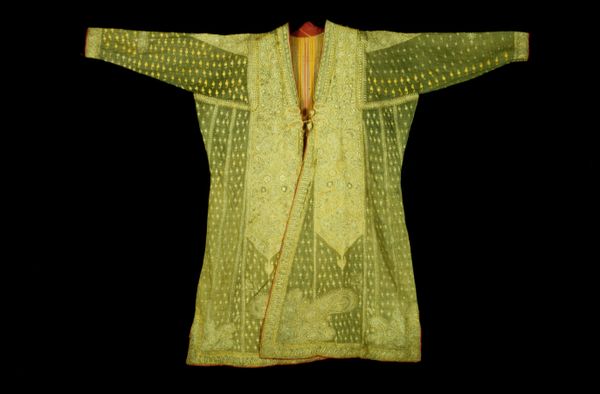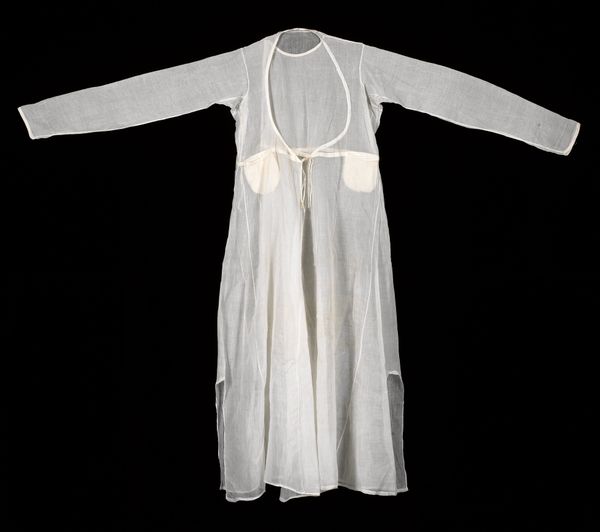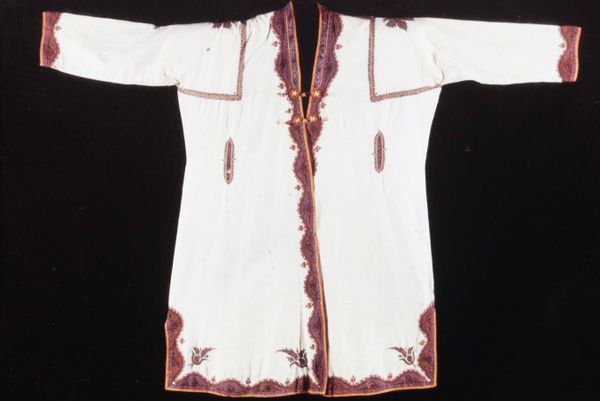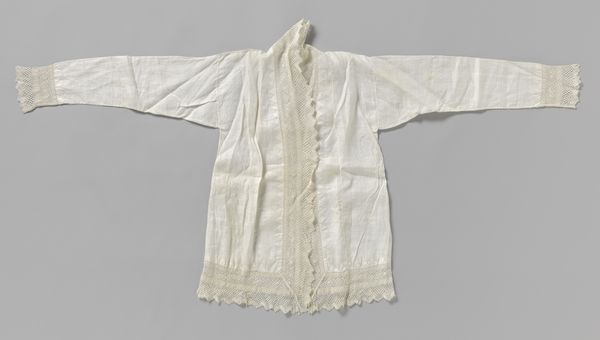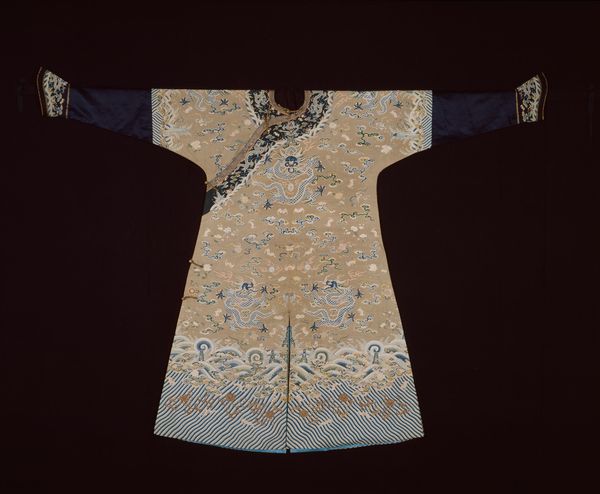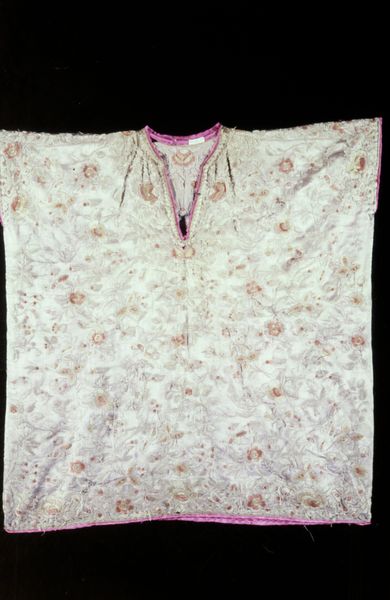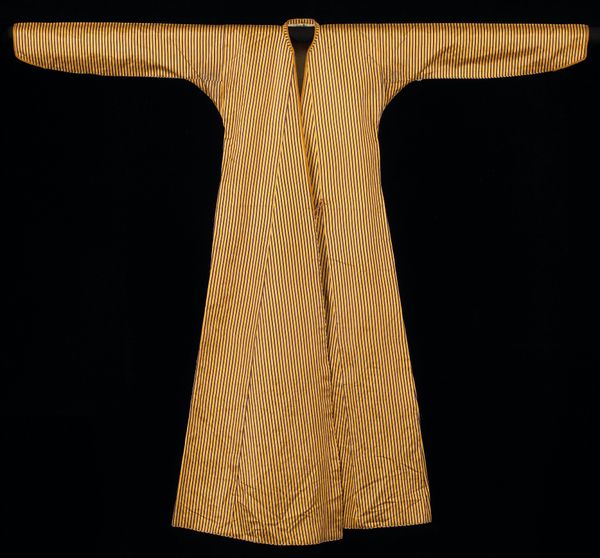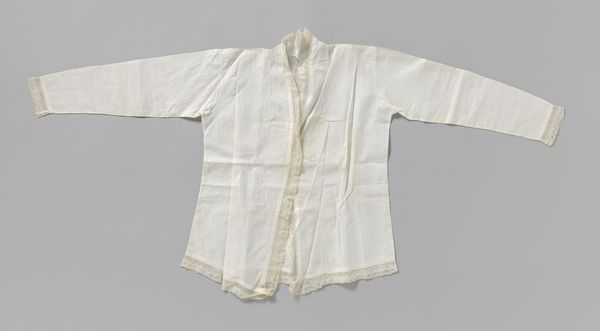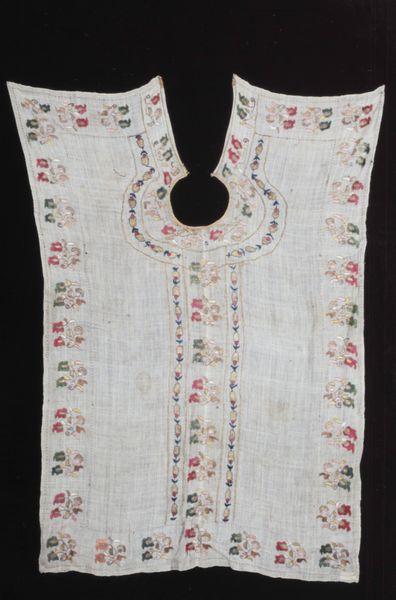
silk, textile
#
silk
#
textile
Copyright: Public Domain
Curator: Upon initial viewing, the symmetry and expansive, unpatterned areas of light color evoke a sense of calm. Editor: Perhaps that calm belies the labor involved? This is "Man's Coat," circa 19th century, made of silk and textile, currently housed at the Minneapolis Institute of Art. Curator: Yes, the repeating pattern creates a unified visual field. Observe how the light catches the raised texture; the subtle gradations provide depth without disrupting the overall evenness. Editor: That texture is key, it speaks to production. The silk speaks of luxury and trade. Who produced the textiles, what were their conditions? This object exists due to intricate processes involving multiple actors. Curator: While I acknowledge the importance of that context, let us not diminish the formal considerations. The open front creates a void, almost like a portal. There’s a dialectic tension between its two-dimensional flatness and our implied depth. Editor: Implied, but very real, given how such robes historically marked the wearer's rank and access to resources. The garment’s display erases labor, focusing only on artistry divorced from the systems enabling it. Curator: But surely you concede that, viewed aesthetically, its sheer surface modulation renders questions about rank and labor almost moot in contemplating its abstract visual language? Editor: Absolutely not! That abstracted view detaches the coat from its embedded reality within society. It misses the vital stories held in each carefully laid thread. Curator: Well, I find that contemplation of its balanced color and repeated motifs allows insight, if not resolution, into the universal search for order. Editor: And I remain fascinated by the complex web of social relations that created such garments. Each analysis holds valuable perspective.
Comments
No comments
Be the first to comment and join the conversation on the ultimate creative platform.

